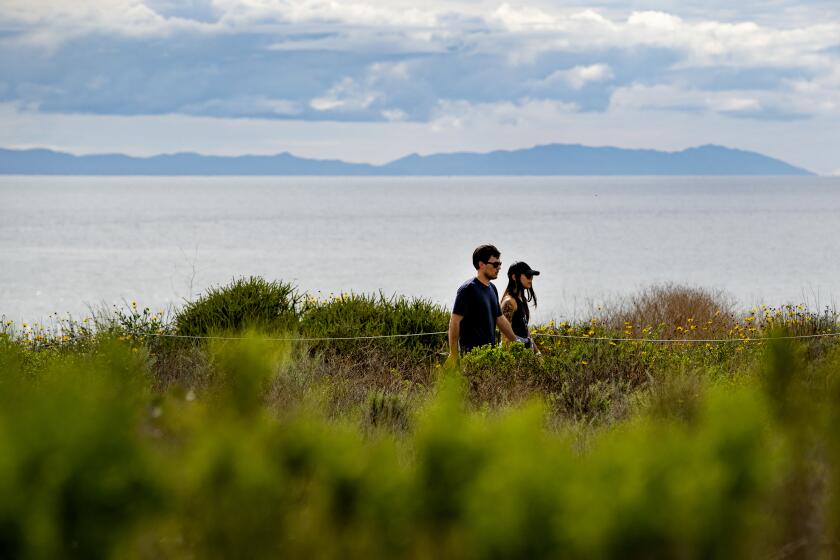BURBANK : Vintage Plane Recalls German Bomber Days
Dean Collinson, whose family hailed from Portsmouth, England, gazed at the sleek twin-engined plane with the Nazi markings parked on Mercury Aviation’s ramp at Burbank Airport and said: “I’ve never seen something that’s bombed England.”
Well, he still hasn’t.
Collinson was talking about the Heinkel 111 decked out in dark green, brown and black camouflage paint, sporting large black crosses on its fuselage and a swastika on its tail.
Scores of bombers of this type flew day and night against England in the Battle of Britain in 1940 until Royal Air Force pilots of Hurricanes and Spitfire fighters discovered they could easily shoot them down.
This particular plane, however, was not built in Germany, but by a Spanish aircraft firm called CASA, which had acquired the rights from Heinkel to build it in 1947.
It never flew in a World War II battle but was used as the personal plane of Spain’s Generalissimo Francisco Franco.
In the late 1960s it was used in filming the movie “Battle of Britain,” and in the 1970s was acquired by the Confederate Air Force, a loose-knit group of Texas-based aviation buffs who restore and fly historical military aircraft.
Pilot Larry Perkins, who has been taking the plane “on kind of a tour of Southern California for the CAF,” calls it “the only flyable model of this bomber in the world right now.”
To circumvent the ban on military aircraft manufacturing imposed on Germany after World War I, the Heinkel was designed originally so that it could be used as a passenger plane, but included features that allowed it to be easily converted to a bomber. Lufthansa, the German airlines, had nine such HE-111s in service when World War II began in 1939 and many more were built openly as military planes.
Gazing at the plane, Dick Reinke, 74, of Glendora recalled his own war experiences as a U. S. Air Force reconnaissance pilot doing low-level photo runs of the beaches around Normandy prior to D-Day.
He visited the plane at Burbank Airport one day recently to take pictures of the plane “from a historical point of view and to add to my collection”.
Two of Collinson’s friends, British-born Tim Scannell and German-born Rainer Giermansinski, were also on the scene and tried to put the plane’s history in perspective.
Giermansinski said he was born two years after the war ended and his family came from an area of Germany that saw little fighting.
To him, he said, the plane is “an interesting piece of history, but, it is difficult to relate to.”
Scannell, whose family lived near London during World War II, also had never seen a German bomber. “My dad was bombed out of his house three times during the war,” he said. Nonetheless, he added that he is “really pleased these guys keep it flying.”
Said Perkins: “We are promoting history so we don’t have to relive it.”
Sign up for The Wild
We’ll help you find the best places to hike, bike and run, as well as the perfect silent spots for meditation and yoga.
You may occasionally receive promotional content from the Los Angeles Times.



